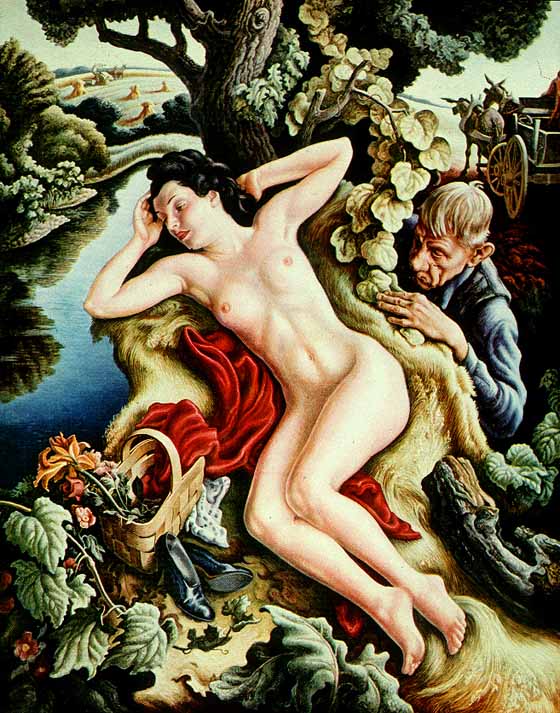Like last Saturday’s Wall Street Journal, this weekend’s paper brought a book review worth noting here. (I’m not the only one, btw, who appreciate’s the WSJ’s Saturday Review section — last month, Peter Osnos, founder of Public Affairs Books, published an essay praising the section in The Atlantic.)
 This time, Henry Allen has reviewed Thomas Hart Benton: A Life by Justin Wolff, a book I heard about in the making, because gossip had it that Wolff would change people’s minds about the man and possibly the art. The book is 400 pages long, so maybe it does, but Allen’s review doesn’t make that case.
This time, Henry Allen has reviewed Thomas Hart Benton: A Life by Justin Wolff, a book I heard about in the making, because gossip had it that Wolff would change people’s minds about the man and possibly the art. The book is 400 pages long, so maybe it does, but Allen’s review doesn’t make that case.
Allen describes Benton accurately as someone for whom the public bore distaste “ for his own loud rancor toward museums, Modernism, Europe, curators, capitalism, Marxism, homosexuals, on and on.” And, of course, his realist kind of art was overtaken by the Abstract Expressionists, including his own pupil Jackson Pollock.
But let’s go back further, as Allen does:
It’s hard to believe, but my old book from 1940 began: “America today is developing a School of Painting which promises to be the most important movement in the world of art since the days of the Italian Renaissance.” Time magazine had put Benton’s self-portrait on its cover in 1934. He’d published his autobiography in 1937. His work was both praised and reviled with passions that no art arouses now, except a Super Bowl halftime show.
Despite his vigorous reading and colorful writing, Benton was no finely sliced aesthete. Instead, he was an angry, hard-drinking, harmonica-playing, well-read little backwoods aristocrat from a small town in southwestern Missouri, a man given to the sad pugnaciousness called a little-man complex. He was called “virile” back when that was a compliment.
Benton was contradictory. He celebrated the American spirit while being a Marxist. He was an American nationalist accused of defaming America by showing its ugliness along with its beauty. He was a good enough politician to get hired to paint historical murals in public buildings. He was fired from his job at the Kansas City Art Institute in 1941 after saying that the typical museum was “run by a pretty boy with delicate wrists and a swing in his gait.”
Is it any wonder then, that as Allen notes, Benton did not survive later critics the way Edward Hopper and Grant Wood did? Some artitsts are lucky enough to escape the personal (say, Caravaggio, Picasso, etc.), but not Benton. He stirs animosity still. I appreciate his talent, but find much of his work, like Persephone (above), creepy.
Allen, though, is a believer in Benton. He ends his review with this: “If only Mr. Wolff could be 9, lying on the floor on a rainy day, looking at the beauty, vulgarity, dark passions and bright fields of “Persephone.” Open your eyes, ignore cultivated tastes, and it explains itself.”
